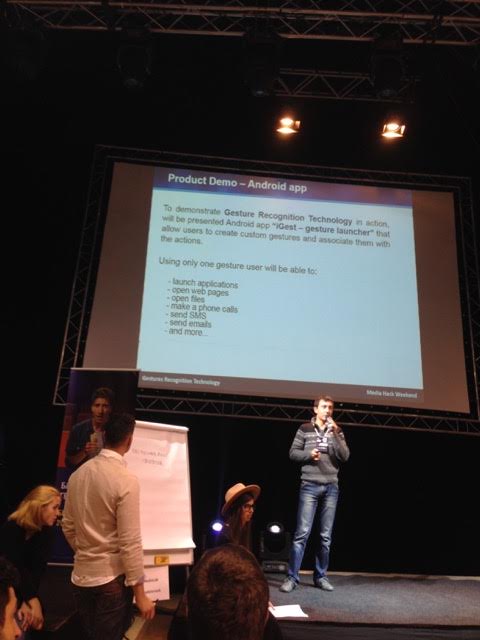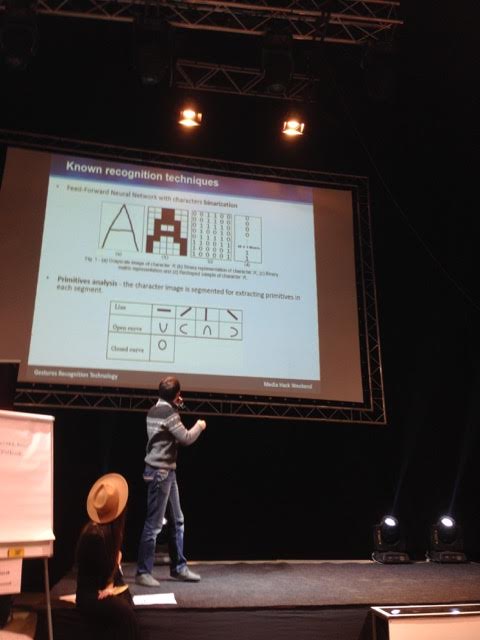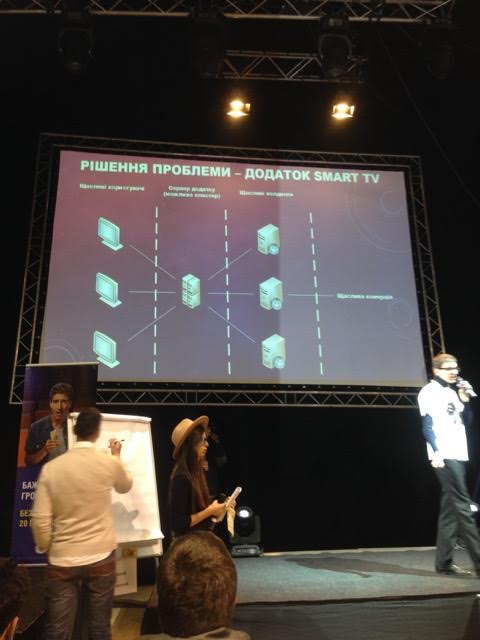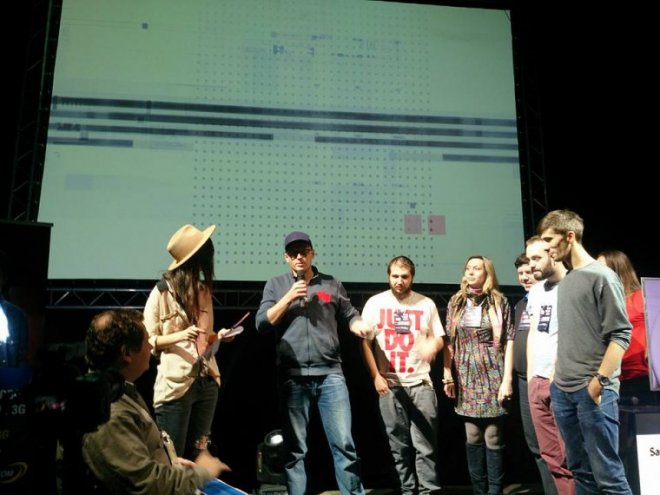Last weekend, we were excited to support Ukraine's largest Hackathon dedicated to creating working prototypes of innovative media solutions that will help bring traditional media to the next level of digital evolution.
Organized by 1+1 media's Future Media Lab and supported by local IT companies, including Intersog, the Hackathon spanned the entire weekend from Oct 16 to Oct 18, 2015, in an attempt to generate new ideas for disruptive technology solutions and identify new use cases for / ways to integrate Big Data, second screen, virtual / augmented reality (VR / AR), mobile applications and other digital trends with traditional mass media such as TV.
The event gathered about 400 digital media enthusiasts, IT specialists, and PR and marketing folks divided into teams to work on prototyping projects. Anyone with an excellent solution idea had a chance to pitch their idea to the audience and find required/missing resources right on the spot to help bring their ideas to life.
Ideas pitching was an exciting part of the Hackathon: although most of the entrepreneurial wannabes have yet to learn how to pitch their projects properly within a brief timeframe to attract people's attention, many demonstrated good business acumen and understanding of what solutions are needed today to disrupt traditional media, create new types of non-obtrusive advertising, digital media apps, etc.
Below, I've selected some of the most interesting cases from the pitching stage:
- Gesture recognition technology (GRT) for live video streaming

image: intersog.com

image: intersog.com
- Inter-in-act - innovative TV application that aims to increase the efficiency of TV commercials and prevent media holdings from wasting money on inefficient advertising campaigns.

image: intersog.com
- Mymobstr - location-based video streaming application that allows media companies, TV channels, newsmakers, and journalists to search for available geo-based streams, request free or paid access or buy out content exclusively from streamers. This app can save media companies a lot of money they usually spend to find an exterior location for video shooting or holding an event.

image: intersog.com

image: intersog.com
- Hi-Kitty - new-gen Tamagotchi that brings in a multiuser gaming experience to a smart TV.

image: intersog.com
- VideoGorillas - a Ukrainian startup specializing in building innovative technology for video production and optimization of the filmmaking process.
Their patented technology is already used by many Hollywood studios. The guys came to the Hackathon to pitch their computer vision project that is based on neural networks. The technology allows for associative language modeling, i.e., the mechanical ability to describe what's shown on the screen in words.
Spillikin
Right now, the mobile ecosystem is very fragmented and platform-dependent. One average family can have a TV, smartphones, tablets, and a PC that run different OS's, which disintegrates family and discourages communication. Parents can spend more time with their children using this interactive technology, even while watching TV or checking the mail. It's actually in line with the latest pediatrician findings that it makes no sense to forbid kids to watch TV or use smartphones; instead, parents should co-use their children's devices to educate them better.
Teams had been working on their prototypes non-stop for 48 hours under the mentorship of professional software and mobile developers, PMs, PR specialists and marketers, and other supporting roles. After all working prototypes had been presented to and reviewed by the jury, Spillikin announced the Hackathon winner. Our congrats to the project team!

